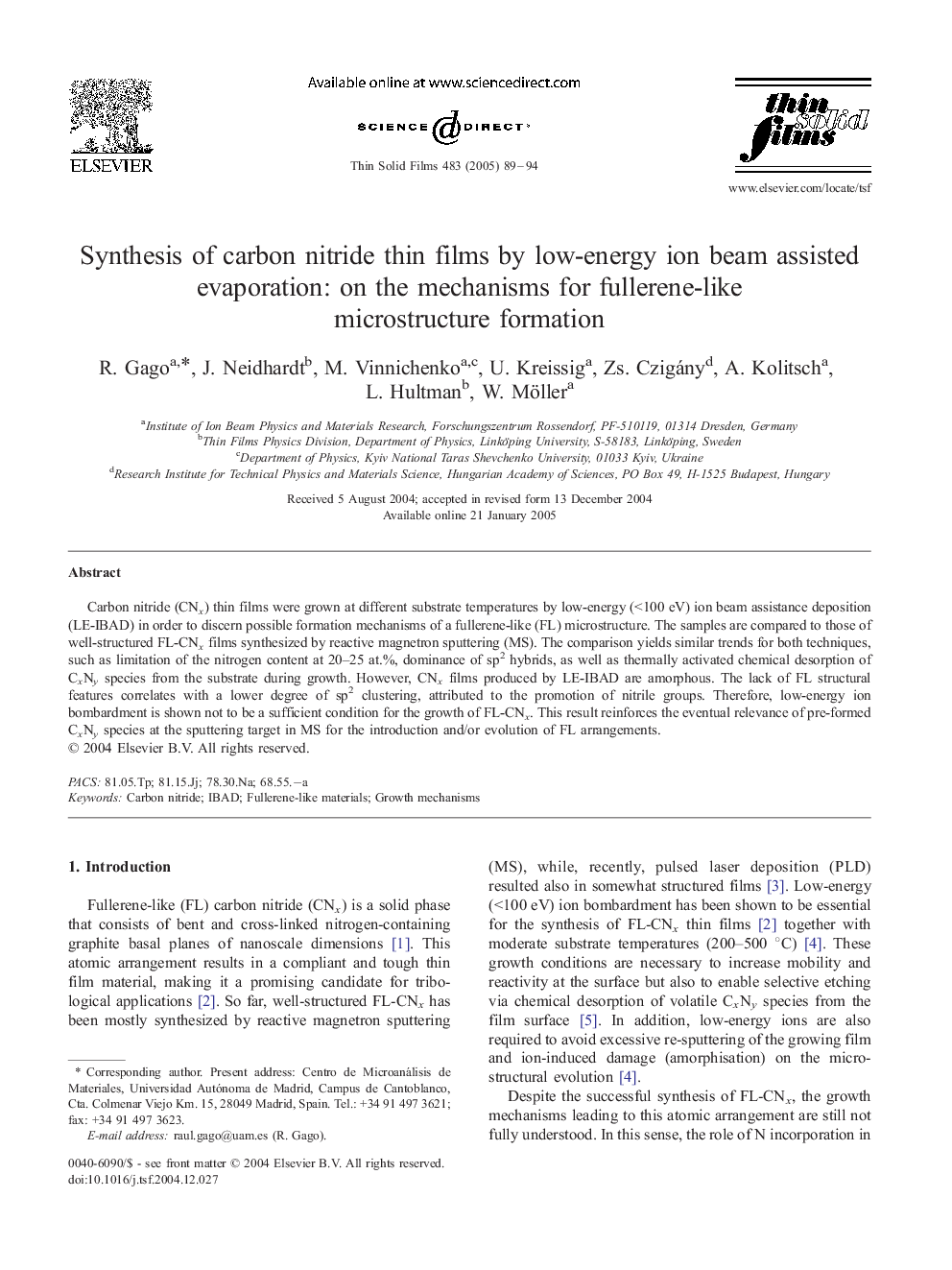| Article ID | Journal | Published Year | Pages | File Type |
|---|---|---|---|---|
| 9812603 | Thin Solid Films | 2005 | 6 Pages |
Abstract
Carbon nitride (CNx) thin films were grown at different substrate temperatures by low-energy (<100 eV) ion beam assistance deposition (LE-IBAD) in order to discern possible formation mechanisms of a fullerene-like (FL) microstructure. The samples are compared to those of well-structured FL-CNx films synthesized by reactive magnetron sputtering (MS). The comparison yields similar trends for both techniques, such as limitation of the nitrogen content at 20-25 at.%, dominance of sp2 hybrids, as well as thermally activated chemical desorption of CxNy species from the substrate during growth. However, CNx films produced by LE-IBAD are amorphous. The lack of FL structural features correlates with a lower degree of sp2 clustering, attributed to the promotion of nitrile groups. Therefore, low-energy ion bombardment is shown not to be a sufficient condition for the growth of FL-CNx. This result reinforces the eventual relevance of pre-formed CxNy species at the sputtering target in MS for the introduction and/or evolution of FL arrangements.
Related Topics
Physical Sciences and Engineering
Materials Science
Nanotechnology
Authors
R. Gago, J. Neidhardt, M. Vinnichenko, U. Kreissig, Zs. Czigány, A. Kolitsch, L. Hultman, W. Möller,
